Newark, NJ (February 1, 2019) – After the development announcement at Photokina 2018, Panasonic is now proud to introduce the full specifications of its long-awaited first full-frame Digital Single Lens Mirrorless cameras, the LUMIX S1R and S1, with a 35mm full-frame CMOS sensor. The new cameras are based on the L-Mount standard, which boasts a well-balanced, large inner diameter and compact dimensions for a flange focus to realize optimum size and performance as a mirrorless camera system.
Preorder the Panasonic S1 & Panasonic S1R
The LUMIX S Series aims for unprecedented image quality with high resolution, rich gradation and superior color reproduction. A high-speed, high-precision AF system based on advanced control technology over the lens, the sensor, and the new Venus Engine enables the user to capture the target in sharp focus without fail. The LUMIX S Series also boasts industry-leading video recording performance (4K 60p/50p*1), intuitive control, rugged design for heavy field use, durability, and expandability.
The LUMIX S1R integrates a 47.3-megapixel full-frame CMOS sensor (36mm x 24mm), which gives it the industry’s highest level of resolution in the full-frame mirrorless cameras*2, to pursue the ultimate power of expression. In addition to the precise reproduction capability in detail, this sensor achieves a high S/N ratio by taking advantage of its high light-condensing efficiency despite a large number of pixels. The LUMIX S1R features a High-Resolution mode for the first time as a mirrorless full-frame camera to enable 187-megapixel ultra-high precision photo shooting.
The LUMIX S1 comes with a 24.2-megapixel full-frame CMOS sensor (35.6mm x 23.8mm) that provides a wide dynamic range and excellent performance at high sensitivity in addition to a natural yet sharp image description thanks to sufficient light condensation per pixel. The LUMIX S1 supports professional use in videography by taking advantage of the stunning expression performance that a full-frame camera can offer. It records smooth 4K 60p video and enables full-pixel readout of signals in 4K 30p/25p*1 to save truly beautiful footage. Furthermore, the LUMIX S1 will comply with 4:2:2 10-bit 4K 30p/25p*1 internal video recording and 4K 60p HDMI output as well as V-Log, with a software upgrade key (to be sold separately) following soon in 2019.
Panasonic’s advanced Contrast AF system with DFD technology has evolved through the development of numerous mirrorless cameras to make the AF system of the LUMIX S1R/S1 even more practical. It achieves not only the industry’s fastest level of focusing speed but also a tracking performance that is made possible by the adoption of advanced AI technology that accurately recognizes moving target subjects. The LUMIX S1R/S1 incorporates a Body I.S. (Image Stabilizer) to effectively compensate for the hand-shake movement. Combining the Body I.S.(5-axis) and the O.I.S. (Optical Image Stabilizer, 2-axis) in the LUMIX S Series lenses, the Dual I.S. 2*3boasts even more powerful compensates for virtually any types of blur. Equipped with a high-resolution Real View Finder, triaxial tilt rear monitor and high-performance shutter unit with high durability, the rugged design LUMIX S1R/S1 provides the professional photographers with high reliability.
Drawing on the vast expertise of the L-Mount Alliance with Leica Camera and Sigma, various interchangeable lenses are available for the LUMIX S Series. On the other hand, the LUMIX PRO service*4 has also launched to support professional work globally.
As a pioneer of the Digital Single Lens Mirrorless camera, Panasonic has pursued innovations in technology under the vision of “Changing Photography.” Crystallizing all these digital and optical technologies, Panasonic is committed to introducing an unparalleled full-frame camera system without compromise for professional photographers and videographers.
*1 PAL area only
*2 As a Digital Single Lens Mirrorless Camera, as of February 1, 2019.
*3 5-Axis Dual I.S.2 can be used with the lens S-R24105 and S-R70200 as of February 1, 2019.
*4 Service is not available in some countries.
1. High picture quality made possible by the first LUMIX full-frame mirrorless camera Unprecedented picture quality and high descriptive performance LUMIX S1R
The LUMIX S1R incorporates a new 47.3-megapixel CMOS sensor without LPF (Low Pass Filter) to realize high resolution and descriptive performance. This sensor adopts an aspherical lens for the on-chip microlens to enhance light condensation. Together with the optimum design to concentrate more incoming light onto the photodiode, it achieves both high resolution and highly efficient light condensation performance. This results in the realization of the industry’s highest level of 47.3-megapixel resolution* in the full-frame mirrorless cameras at high S/N ratio and maximum ISO 25600 high sensitivity. A large amount of digital signals is processed by the new high-speed, high-performance image processor Venus Engine to render images with breathtaking description in both photo and video.
* As a Digital Single Lens Mirrorless Camera, as of February 1, 2019.
High image quality, high sensitivity performance LUMIX S1
The LUMIX S1 employs a 24.2-megapixel CMOS sensor. The new Venus Engine, which is exclusively tuned for the full-frame camera, and its Multipixel Luminance Generation and Intelligent Detail Processing realize natural, high-resolution expression while suppressing color moiré. Three-dimensional color control improves the color reproduction of both bright and shadow areas. This results in natural, true-to-life images from low to high sensitivity. Taking advantage of sufficient light condensation, the LUMIX S1 boasts a wide dynamic range and reproduces sharp images with exceptional clarity. Noise is minimized even when shot at maximum ISO 51200 high sensitivity. It is an ideal camera to use especially in low-light situations.
An AR coating applied on the sensor of both LUMIX S1R/S1 minimizes ghost and flare even in backlighting. In combination with the high-quality LUMIX S Series lenses based on the L-Mount, this further enhances the potential of the camera.
Preorder the Panasonic S1 & Panasonic S1R
Plus, the LUMIX S1R/S1 integrates the Body I.S. (Image Stabilizer) for powerful handshake correction. Panasonic developed an algorithm that precisely calculates shake information acquired not only from a gyro sensor but also from the image sensor and accelerometer sensor. This enables more accurate shake detection and compensation, making it possible to use a 5.5-stop slower shutter speed*1. Combining the Body I.S. (5-axis) in the camera and the O.I.S. (Optical Image Stabilizer, 2-axis) in the LUMIX S Series lens, the 5-axis Dual I.S. 2 compensates for larger movements that were conventionally uncontrollable. Maximizing both O.I.S and B.I.S. is highly beneficial in telephoto shots and in adverse situations, such as in low-light or with one-handed shooting with a 6-stop slower shutter speed*2. The 5-axis Dual I.S. 2 works for both photo and video recording, including 4K. The Body I.S. compensates for camera movement even when other L-Mount lenses without O.I.S. are used.
Taking full advantage of its high-resolution sensor, the LUMIX S1R/S1 provides a High-Resolution mode that faithfully reproduces precise details to be saved as beautiful, highly realistic RAW images. Eight consecutive images are automatically shot while shifting the sensor using the Body I.S. (Image Stabilizer) mechanism and synthesized into a 187-megapixel equivalent (16,736 x 11,168-pixel) image for LUMIX S1R and 96-megapixel equivalent (12,000 x 8,000-pixel) image for LUMIX S1 by the new Venus Engine, which boasts high-speed signal processing. This mode is suitable for taking natural landscapes or fine arts with delicate details. This magnificently high-resolution photo is ideal for landscape photography of stationary subjects using a tripod. However, it can also be used in situations where moving subjects are included in the scene, by switching the sub-mode.
The HLG*3 Photo mode is a whole new style of photo expression that Panasonic proposes. It provides a wider dynamic range to reproduce light and shadow with more natural contrast. The HLG Photos can also be produced as an HSP file*4 with compressed high-brightness signals in stunning 8K resolution (7,680 x 4,320 in 16:9, with LUMIX S1R) or its full resolution (5,888 x 3,312, in 16:9, with LUMIX S1) in addition to JPEG/RAW files. It excels in the expression of lights, such as sparkling starlight or glaring sunlight. The user can playback these vibrant images on the latest Panasonic HLG-compliant 4KTV via HDMI cable connection or other HLG-compliant devices. It is also ideal for photo presentations by photographers.
The high-precision shutter unit offers the highest shutter speed at a maximum 1/8000 second to capture spur-of-the-moment, fast moving subjects and to use a high-speed lens with a fully open aperture even outdoors for impressive defocusing. The external flash can be synchronized with the industry’s fastest shutter speed of a maximum 1/320 second.*5*6
*1 Based on the CIPA standard [Yaw/Pitch direction: focusing distance f=50mm, when S-X50 is used.]
*2 Based on the CIPA standard [Yaw/Pitch direction: focusing distance f=200mm, when S-R70200 is used.]
*3 “HLG (Hybrid Log Gamma)” is an international standard (ITU-R BT.2100) HDR format.
*4 “HSP” is an HDR picture format using HLG format video technology.
*5 The guide number decreases when the shutter speed is set to 1/320 of a second.
*6 As a Digital Single Lens Mirrorless Camera, as of February 1, 2019.
2. High-speed, high-precision AF system LUMIX S1R LUMIX S1
Panasonic has achieved a high-speed AF with its advanced control technology over the major devices – lens, sensor, and imaging engine. The lens and sensor communicate at a maximum 480 fps. Combining the Contrast AF with DFD technology, the LUMIX S1R/S1 realizes an ultra-high-speed, high-precision AF of approximately 0.08 sec*1. The LUMIX S1R/S1 also boasts high-speed burst shooting at 9 fps (AFS) or 6 fps (AFC). With its high subject tracking performance, the LUMIX S1R/S1 never loses the target subject. As a camera that excels in low-light shooting, the LUMIX S1R/S1 boasts -6EV*2 luminance detection performance with Low Light AF thanks to the higher sensitivity and optimized tuning of the sensor. The face/eye detection technology makes it possible to capture people in crisp focus, the Eye AF even detects the pupil of the eye and precisely focuses on it for impressive portrait shooting. The LUMIX S1R/S1 also incorporates advanced AI technology that detects specific subjects – humans and fast-moving animals, including dogs, cats, and birds. The camera keeps tracking these subjects even when they turn their back to the camera.
For more continuous burst shooting, 6K PHOTO*3 makes it possible to capture unmissable moments at 30 fps by extracting the frame with the best timing out of a 6K burst file (in 4:3 or 3:2 aspect ratio) to save as an approximate 18-megapixel equivalent high-resolution photo. The 4K PHOTO enables 60-fps high-speed captures in approximate 8-megapixel equivalent resolution. In 6K PHOTO /4K PHOTO, three exclusive modes can be chosen from depending on the situation; 6K Burst/4K Burst, 6K Burst (Start/Stop)/4K Burst (Start/Stop) and 6K Pre-burst/4K Pre-burst. Users can choose the most suitable burst shooting mode in addition to the regular consecutive shooting mode in full resolution depending on the situation.
*1 11EV, at wide-end with S-R24105 (CIPA) in LVF120 fps setting.
*2 At ISO100, F1.4, AFS
*3 6K PHOTO’ is a high-speed burst shooting function that cuts a still image out of a 4:3 or 3:2 video footage with approx.18-megapixel (approx. 6000 x 3000 effective pixel count) that the 6K image manages.
3. Operability from ingenuity for intuitive control LUMIX S1R LUMIX S1
The LVF (Live View Finder) is the key factor for completing the ultra-high-speed response of the camera. The LUMIX S1R/S1 has the largest level of Real View Finder which boasts the world’s highest 5,760k-dot resolution.* The 0.78x magnification ratio can be switched to 0.7x or 0.74x according to the shooting situation. Adoption of a high-speed, high-precision OLED (Organic Light-Emitting Diode) for the LVF achieves smooth display at 60 fps/120 fps (switchable) and high-speed response with a minimum time lag of less than 0.005 sec as well as 10,000:1 high contrast for exceptional visibility. With minimum distortion and high optical performance, this Real View Finder provides a natural view as seen with the naked eye. It is always sharp and clear from the center all the way to the corners.
The 2,100K-dot high-resolution monitor in 3:2 aspect ratio has adopted a triaxial tilt moving element to secure both durability and operational ease. It also has a touch control system. Live View Boost is another practical feature that makes it possible to check the composition even in total darkness by boosting the sensitivity just for live view. It also incorporates a night mode that provides mild backlighting. It lets the user watch the subject comfortably even after viewing the monitor in a dark situation for a long time. The LUMIX S1R/S1 includes a largest-in-class Status LCD on the top, allowing users to check the settings at a glance.
To make the camera just like a part of the photographer's body, the LUMIX S1R/S1 provides a firm grip, making it easy to hold for long periods. The control buttons and dials are located based on an ergonomic study to enable the user to concentrate on shooting. The adoption of an 8-directional joystick and refined UI (User Interface) also supports quick operation during shooting. In addition, illuminated buttons can be of help in low-light situations. An operation lock lever prevents unintentional operation, and the user can choose which operation to lock.
* As a Digital Single Lens Mirrorless Camera, as of February 1, 2019.
4. Rugged design, reliability and expandability LUMIX S1R LUMIX S1
To be tough enough to withstand heavy field use, the main structure is composed of a magnesium alloy full die-cast front/rear frame. Robust construction and sealing for every joint, dial, and button make the LUMIX S1R/S1 not only splash resistant* and dust resistant,* but also freeze resistant down to -10 degrees Centigrade. The shutter unit is also durable for approximately 400,000 cycles.
The LUMIX S1R/S1 is equipped with a double memory card slot compatible with SD (UHS-II) or XQD memory cards for high-speed, high-capacity continuous data recording. Users can flexibly choose the recording method from Relay Recording, Backup Recording or Allocation Recording using the double slots. It will also be compatible with CFexpress in the near future. The 7.4-V 3,050 mAh high-capacity battery can be quickly charged via USB PD (USB Power Delivery) using the bundled USB3.1 Type-C cable. And it also realizes high-speed data transfer.
A variety of new accessories are available for the LUMIX S1R/S1, including Remote Shutter (DMW-RS2), Eyecup (DMW-EC6), Battery Grip (DMW-BGS1) and Battery Charger (DMW-BTC14). The Battery Charger also complies with USB PD and enables quick power charging in approximately 2 hours. The camera can be used while charging via this adaptor. The conventional External Flash (DMW-FL580L / FL360L / FL200L) can also be mounted on the LUMIX S Series cameras.
*Dust and Splash Resistant does not guarantee that damage will not occur if this camera is subjected to direct contact with dust and water.
5.Outstanding video recording performance in a full-frame camera 4K 60p video recording for more creative freedom LUMIX S1R The LUMIX S1R is a camera designed and developed to boast exceptional performance in photography, yet is capable of 4K 60p video recording.*2 To elevate the video expression, even more, a variety of effects are available for video recording.
Exceptional video recording performance for professional videographers LUMIX S1
The LUMIX S1 features outstanding video performance for professional videography with 4K 60p recording. It realizes a crop factor of 1.0x in 4K 30p/25p*1/24p, which means that the user can record video in the original viewing angle of the lens. There is no recording time limit*3 for both 4K 30p/25p*1/24p and Full-HD video. Notably, the CMOS Sensor with high sensitivity on the LUMIX S1 achieves full-pixel readout for an excellent S/N ratio. The HDR (High Dynamic Range) video recording is available, which reproduces both the bright parts and dark parts of an image, making it look just like human eyes see it. The camera records video with a designated gamma curve compatible with ITU-R BT.2100, and you can now choose Hybrid Log Gamma (HLG) in Photo Style. The LUMIX S1 further expands its potential with a firmware update including 4:2:2 10-bit 4K 30p internal video recording and 4K 60p/50p HDMI output as well as V-Log, with a Software Upgrade Key (to be sold separately) following soon in 2019.
Preorder the Panasonic S1 & Panasonic S1R
As a camera from Panasonic that has been overstepping the limit of video performance in digital cameras, a host of functions are available on the LUMIX S1R/S1. The High-Speed Video lets users record slow-motion video in 4K (maximum 60 fps and FHD (maximum 180 fps).
For the terminal, an HDMI Type A is provided. Plus, a cable lock holder for the HDMI cable is included in the LUMIX S1R/S1 to prevent unplugging trouble on location. LINE input is also supported by a 3.5-mm microphone jack. This makes it possible to input sounds from an external audio device, for more efficient video production. A 3.5-mm headphone jack is also available. In addition, it complies with the Microphone Adaptor DMW-XLR1 (sold separately), which is a plug-in type adaptor for an XLR microphone to record high-quality stereo sound. It is ideal for lip-sync recording. Dedicated switches allow direct, quick control. MIC, LINE and CONDENSER MICROPHONES are switchable.
*1 PAL area only.
*2 Maximum 15 minutes in 4K60p and unlimited recording time in Full HD until the SD Memory Card becomes full or the battery runs out.
*3 Maximum 29 minutes 59 seconds in 4K60p until the SD Memory Card becomes full or the battery runs out.
– When the ambient temperature is high or continuous recording is performed, the camera may stop the recording to protect itself. Wait until the camera cools down (*2*3).
6. Other Features LUMIX S1R LUMIX S1
- Photo Style Featuring a New Flat Mode
To shorten post-processing work, JPEG photos can be adjusted precisely according to the photographer’s intention. The LUMIX S1R/S1 also provides a Flat mode that features a plain finish with less contrast and saturation for versatile use. - Variable Aspect Ratios With New 65:24 and 2:1
In addition to the standard 3:2, 4:3, 16:9 and 1:1, 65:24 (Film Panorama) and 2:1 (6 x 12 cm) aspect ratios are available for photo shooting. - I.S. Status Scope
The user can consciously remove the cause of shake by checking a pointer that indicates the camera’s shaking condition. It is available while the viewfinder or rear monitor blacks out even during a long-time exposure. - Flicker Decrease
When the flickering of a fluorescent light is detected, the camera indicates it and releases the shutter when its effect is the least to suppress the discontinuity of exposure or color across a sequence of photos.
*Not available in 6K PHOTO, 4K PHOTO and Post Focus. - Highlight Weighted Light Metering Mode
The Highlight Weighted Light Metering Mode meters light with the priority on highlighted parts, to prevent it from washing out. - New AWBw Auto White Balance Mode
In Auto White Balance, a new AWBw that retains a reddish tint is available in addition to conventional AWB (standard) and AWBc (bluish tint). AWBw reproduces healthy, rosy skin color even under fluorescent light. - Bluetooth 4.2 and Wi-Fi 5GHz (IEEE802.11ac)* / 2.4GHz (IEEE802.11b/g/n)
Compatibility with Bluetooth 4.2 (called BLE: Bluetooth Low Energy) enables constant connection with a smartphone/tablet with minimum power consumption. The settings of a LUMIX S1R/S1 camera can also be copied and transmitted wirelessly to other S1R/S1 cameras when using multiple S1R/S1 cameras*1. Also, Wi-Fi 5GHz (IEEE802.11ac)*2 is effective in addition to 2.4GHz (IEEE802.11b/g/n.) This provides even secure and stable connection not only with a smartphone/tablet but also with other devices on location for smooth remote control. Transmission speed of photo/video data is also increased up by using the 5GHz-band*2.
*1 The Settings of LUMIX S1R can be copied to S1R only and the settings of LUMIX S1 can be copied to S1 only.
*2 5GHz Wi-Fi is not available in some countries. - Lumix Tether
This software enables tethered shooting via USB. Users can control the camera by connecting it to a PC via USB. It lets you view the image on a large PC screen while shooting, which is helpful in commercial photoshoots of portraits, products and more, where continuous confirmation is required. You can use [6K PHOTO] [4K PHOTO] and start and stop video recording with tethered shooting. It is also possible to choose the folder to save the image files in the PC. - Lumix Sync
Lumix Sync is a new application for iOS/Android devices, which enables photo transmission to a smartphone or tablet via easy wireless connection. It also allows remote control of the camera using a smartphone or tablet. - Leica is a registered trademark of Leica Microsystems IR GmbH.
- L-Mount is a trademark or registered trademark of Leica Camera AG.
- Android and Google Play are trademarks or registered trademarks of Google Inc.
- IOS is a trademark or registered trademark of Cisco in the U.S. and other countries and is used under license.
- XQD is a trademark of Sony Corporation.
- All other company and product names are trademarks of their respective corporations.
- Some accessories are not available in some countries.
- The use of recorded or printed materials that are protected by copyright for any purpose other than personal enjoyment is prohibited, as it would infringe upon the rights of the copyright holder.
- Design and specifications are subject to change without notice
- Preorder the Panasonic S1 & Panasonic S1R

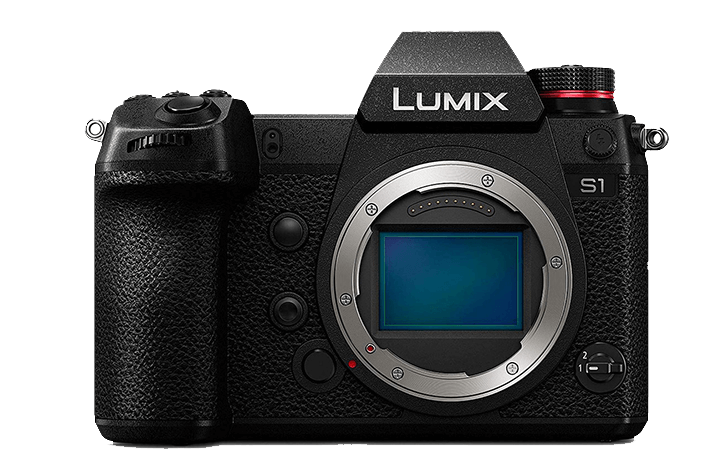
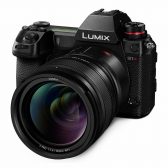
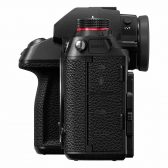
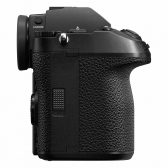
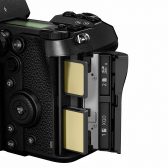

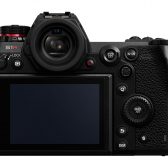
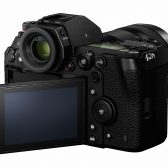
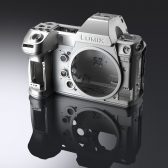
All of these pro-level full frame mirrorless cameras (right now) have the same basic problem - they lack the native lenses I need. The Panasonic even more so since adapters are not available. At minimum, give me F2.8 with IS/OS/VC in lens for 15-30/35, 24-70/75, and 70-200/210 (or better).
In body, would love IBIS so I can stop with the gimbal garbage for video. I tripod or support whenever possible, but let's face it - life and work does not always allow tripods.
I'm hopeful to see a release from Canon with real, usable 4K @30fps and/or @60fps (and high frame rate at lower resolutions) without crop in the near future.
I really need 28MP+ for stills and truly would prefer even higher. 5DMk4 image quality is baseline, but even that gets into some grey territory when wanting to print large multi-piece canvas art.
Would prefer high MP bodies with nearly all video features (cap at 30fps vs 60fps if necessary), but vastly different video specs (like Sony) make them completely different models. Let's end the confusion and call them different products/names.
Wait and see...
But ergonomics seem to be far better than Sony's small- hands cameras, at least their size suggests so.
And, if $$$ don't matter, those Leica SL lenses...:love::love::love::love::love:
Oh! I almost forgot the 24/105 MACRO!!!!!!!!
Misery seeking company: I too get only about 25% of CIPA shots with my Leica M 240.
Perhaps I am misunderstanding your question, but the M mount is Canon's mount for their M series APS-C crop cameras, which has nothing to do with Panasonic and Leica cameras. Panasonic, which was until now making micro 4/3rds cameras, has created a partnership with Leica in making a FF camera, thus they are using the L- mount that Leica already has established for their FF cameras. Lenses for FF cameras are normally wider and heavier as they need to project a wider image circle and are faster (larger apertures) than lower level consumer lenses made for the crop sensor M system. The L mount has no advantage that I know of offer better IQ. In fact, it can be argued that Canon's and Nikon's (new mirrorless) mount, will have the advantage (albeit small) when it comes to designing lenses with high IQ at a reasonable price.